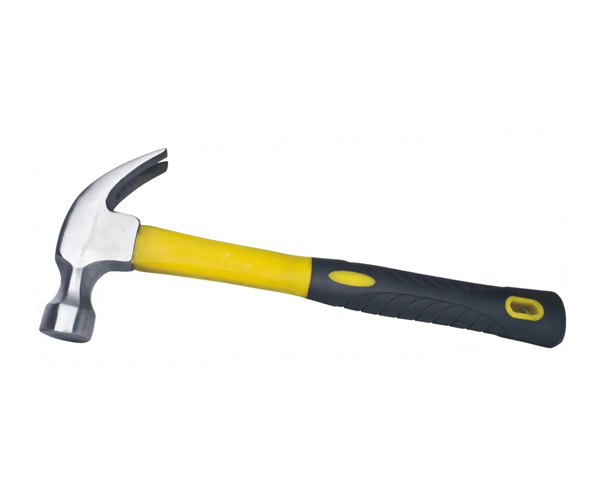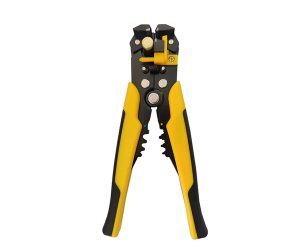The claw hammer is one of the most essential tools in construction, woodworking, and DIY projects. It combines the ability to drive nails and remove them with its unique claw design. But how did it come to be? Who invented the claw hammer? This article will explore the origins of this tool, tracing its history, invention, and how it has evolved over time. We’ll dive into the key features that have made the claw hammer indispensable for generations and explain why it remains a cornerstone of toolkits across the globe.
1. What is the Claw Hammer and Why is it Important?
To begin, let’s define what a claw hammer is and why it’s so important. A claw hammer is a tool typically used for driving nails into wood or other materials, and for removing them with its unique claw-shaped end. The design is simple but highly functional, making it a staple in almost every toolkit. But here’s the kicker: it’s not just about driving nails. The claw at the back of the hammer makes it a two-in-one tool, capable of both driving and pulling nails. This innovation made the claw hammer an essential tool for builders, carpenters, and DIY enthusiasts alike.
The versatility of the claw hammer is one of the reasons it’s so widely used. From framing houses to simple repairs, it is an indispensable part of many professions. Its design allows it to be used in tight spaces, and it’s easy to handle, making it the perfect tool for both professionals and home improvement enthusiasts. But what’s the real story behind the hammer? How did it evolve into the tool we know today?
One of the key features that set the claw hammer apart from its predecessors is its dual functionality. The hammer not only drives nails into place but can also extract them from materials, a crucial feature when making adjustments or undoing work. Ready for the good part? This simple but clever design change revolutionized the way hammers were used and made the claw hammer the go-to choice for many tradesmen.
| Feature | Description |
|---|---|
| Dual Functionality | Both drives and removes nails |
| Ergonomics | Simple, easy to handle |
| Versatility | Used in construction, woodworking, and repairs |
2. When Was the Claw Hammer First Used?
The history of the claw hammer dates back to ancient times, but when exactly was it first used? While it’s difficult to pinpoint the exact moment of its invention, we know that early versions of the hammer have been found in archaeological digs, dating as far back as the Bronze Age. These early hammers were simple tools, primarily used for pounding objects into place. What’s the real story? These ancient tools didn’t have the familiar claw shape but served similar purposes—driving nails or hitting objects to shape them. It wasn’t until much later that the addition of the claw transformed the hammer into the modern version we recognize today.
The first recorded use of a hammer with a claw-like feature dates back to the 19th century. The addition of the claw allowed for nail removal, something that previous tools lacked. This innovation is believed to have been introduced during the industrial revolution when efficiency and functionality became key priorities in tool design. But wait, there’s more! The transition from simple hammers to the modern claw hammer was gradual, involving improvements in materials and design over time.
Interestingly, early hammers didn’t have the ergonomic handles we see today. These were often made from metal or other hard materials, which didn’t provide the comfortable grip that modern versions offer. It wasn’t until the late 19th and early 20th centuries that wooden handles became common, making the hammer easier to wield and reducing strain on the user’s hand.
| Era | Hammer Characteristics | Material Used |
|---|---|---|
| Bronze Age | Simple pounding tools | Stone, Bone |
| 19th Century | Introduction of the claw | Iron, Steel |
| Modern Day | Ergonomic handles, dual functionality | Wood, Fiberglass |
3. Who is Credited with Inventing the Claw Hammer?
The invention of the claw hammer doesn’t belong to a single individual; rather, it is the result of gradual evolution. While the first modern hammer with a claw design emerged in the 19th century, many believe that early blacksmiths and toolmakers contributed to its development. The addition of the claw was a response to a practical need: how to remove nails once they were driven in. This innovation made it much easier to pull out nails, which was particularly useful for both builders and carpenters.
But here’s the kicker: Some credit the American inventor and blacksmith John S. Pemberton with refining the design of the claw hammer, although the exact details of his contributions remain somewhat unclear. Pemberton is often linked with the popularization of the claw hammer in the United States, although other inventors and blacksmiths from around the world also contributed to its development. The truth is, the invention of the claw hammer is more of a collective effort over many years, with no single person being solely responsible for its creation.
Interestingly, the hammer underwent various modifications during its early years, with different variations of the claw design being tried out. Early versions of the hammer had slightly different claw shapes—some were more curved, while others were straight. As each design was tested in the field, blacksmiths and carpenters found that the curved claw provided the best leverage for pulling nails. This led to the widespread adoption of the curved claw design that is still in use today.
| Contributor | Contribution |
|---|---|
| John S. Pemberton | Refined design in the U.S. |
| Early Blacksmiths | Contributed to the evolution of the hammer |
| Global Toolmakers | Experimented with different claw shapes |
4. How Did the Claw Hammer Change the Construction Industry?
The advent of the claw hammer was nothing short of revolutionary for the construction industry. Before its introduction, builders and carpenters had to rely on a variety of different tools for tasks such as driving and removing nails. The claw hammer simplified this by combining both functions into one tool, saving time and making construction projects more efficient. But wait, there’s more—this innovation also improved safety. The sturdy handle and dual functionality reduced the need for multiple tools, which not only sped up work but also minimized the risk of accidents.
The dual purpose of the claw hammer allowed carpenters and builders to work more effectively, especially in fast-paced environments like construction sites. Its ability to both drive and pull nails made it indispensable for framing, roofing, and other construction tasks. Ready for the good part? With the introduction of the claw hammer, workers no longer had to juggle different tools, resulting in faster, more precise work. This change significantly improved productivity on construction sites and was one of the main reasons for the widespread adoption of the claw hammer.
By the early 20th century, the claw hammer had become the go-to tool for builders, woodworkers, and DIY enthusiasts. It played a significant role in the growth of the construction industry, enabling workers to complete tasks more efficiently and with greater precision. Today, the claw hammer remains a crucial tool in construction, despite the advent of more specialized tools.
| Feature | Benefit |
|---|---|
| Dual Functionality | Saves time and effort |
| Ergonomic Handle | Reduces strain and fatigue |
| Versatility | Used across multiple construction tasks |
5. What Are the Key Features of a Claw Hammer?
The claw hammer’s design has remained relatively consistent over the years, but some features have evolved to enhance its usability. One of the key features is the hammer’s claw—a curved, fork-like end used to remove nails from wood or other materials. The design allows the user to apply leverage, making it much easier to pull nails out than with previous tools. But here’s the kicker: this feature alone sets the claw hammer apart from all other types of hammers.
Another significant feature is the handle, which has evolved over the years. Early hammers had metal or wooden handles, but today’s hammers often feature fiberglass or composite handles, which are both lighter and more durable. These modern handles are designed to reduce vibration and improve comfort, making the hammer easier to use for long periods. Ready for the good part? The ergonomic design of the handle has significantly reduced the risk of injury and strain, making the claw hammer a safer tool to use.
The hammer’s head is another essential feature, typically made of steel for strength and durability. Some hammers come with a magnetic nail holder on the face of the hammer, which helps users position nails easily and avoid missing them. This feature has further streamlined the process of driving nails and improved efficiency, making it even more popular with construction professionals.
| Feature | Description |
|---|---|
| Claw Shape | Curved for nail removal |
| Handle Material | Wooden, fiberglass, composite |
| Magnetic Nail Holder | Improves precision and efficiency |
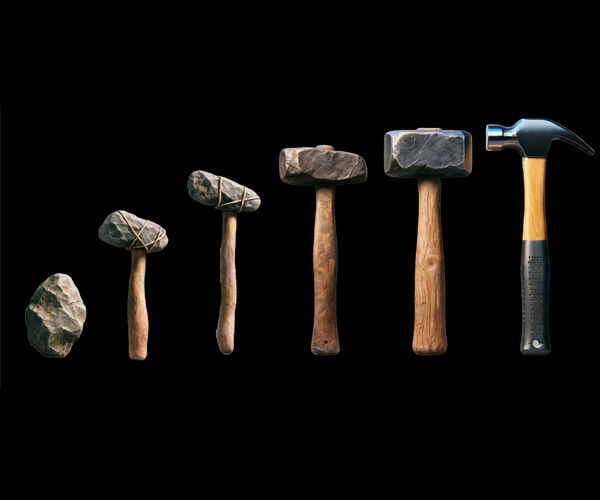
6. How Has the Claw Hammer Evolved Over Time?
The evolution of the claw hammer is a fascinating journey of innovation and refinement. When we look at the earliest versions, they were simple tools with minimal features. But here’s the kicker: over time, both the design and materials used in the hammer have been improved, making it more efficient, durable, and comfortable to use. Ready for the good part? Let’s take a deeper dive into how these changes occurred.
One of the first major advancements in the hammer’s design was the inclusion of the curved claw, which was introduced to make nail removal easier. Before this, hammers had flat faces and were primarily used for driving nails. The curved claw provided the much-needed leverage to remove nails, which had been a cumbersome task before. By the late 19th century, this innovation had become the standard for claw hammers.
The next significant leap came in the handle materials. Early hammers used wood, which was prone to splintering and breaking. By the 20th century, manufacturers began experimenting with more durable materials, such as fiberglass and composite materials, which offered greater strength and flexibility. These new handles were lighter, more comfortable to hold, and more resistant to damage, greatly improving the hammer’s functionality. But wait, there’s more! The fiberglass handle also reduced the shock transferred to the user’s hand during use, enhancing comfort and reducing fatigue.
And what’s the final piece of the puzzle? The hammer head itself underwent a series of improvements as well. Initially made from iron, it was eventually replaced by steel to increase durability and reduce the overall weight of the tool. Some modern claw hammers even feature magnetic nail holders to make driving nails more efficient and precise. This innovation has added another layer of convenience, especially for carpenters and builders who work in fast-paced environments.
| Evolution Phase | Changes Made | Materials Used |
|---|---|---|
| Early Designs | Flat face, simple shape | Stone, Bone, Iron |
| 19th Century | Addition of the claw, refined shape | Steel |
| Modern Day | Ergonomic handle, magnetic nail holder | Fiberglass, Composite, Steel |
7. Where Was the Claw Hammer Invented?
The invention of the claw hammer is not tied to a specific location, as the tool evolved gradually through the contributions of blacksmiths and toolmakers from various regions. However, one thing is certain: the claw hammer’s design, which became the model for modern versions, emerged primarily in Europe and the United States during the 19th century. But here’s the kicker—though its final design took shape in the West, earlier forms of the hammer, with similar functions, can be traced back to ancient civilizations in Egypt, Greece, and Rome.
What’s the real story? The claw hammer’s journey began in ancient Egypt, where early versions of hammers were used for construction and masonry. These hammers were rudimentary, made from stone or wood, and were used for driving pegs and shaping materials. As civilizations advanced, so did toolmaking techniques, and by the Middle Ages, the hammer had evolved significantly. The addition of the claw in the 19th century was a turning point that set the modern claw hammer apart from its predecessors. Ready for the good part? The design was perfected in the industrialized West, with the United States playing a major role in its refinement and mass production.
Interestingly, many different cultures developed similar tools independently. For example, Chinese craftsmen created tools with similar functionalities, though their designs differed somewhat in structure and materials. In modern times, the claw hammer has been adapted worldwide, with different regions introducing their own variations based on local needs and preferences.
| Region | Contribution to Claw Hammer Design |
|---|---|
| Ancient Egypt | Early hammers used for construction |
| Europe | Refined the design during the 19th century |
| United States | Played a key role in mass production and refinement |
8. Why Was the Claw Hammer Invented?
The invention of the claw hammer was driven by practical needs in the construction and carpentry industries. Before its invention, workers had to use separate tools to drive and remove nails, which was inefficient and time-consuming. What’s the real story? The claw hammer was created to solve this problem by combining the two functions into one tool. The addition of the claw made it possible to remove nails easily without having to resort to additional tools.
This innovation was particularly important for carpenters, builders, and blacksmiths, who often worked in fast-paced environments and needed a tool that was both efficient and versatile. Ready for the good part? The design of the claw hammer drastically improved productivity on construction sites, allowing workers to complete tasks more quickly and with fewer tools. It also made the work process safer, as workers no longer had to switch between different hammers and prying tools, reducing the risk of accidents.
But wait, there’s more! The claw hammer wasn’t just designed to simplify work for professionals. It also became a symbol of innovation in the DIY community. With its dual functionality and simple design, it quickly became a must-have tool for homeowners and hobbyists alike, making home improvement projects more accessible to a broader audience.
| Reason for Invention | Impact |
|---|---|
| Efficient nail removal | Reduced need for multiple tools |
| Dual functionality | Increased productivity and safety |
| Accessibility for DIYers | Became a household staple |
9. What Other Tools Were Invented Around the Same Time as the Claw Hammer?
The development of the claw hammer didn’t happen in isolation. During the same period, several other important tools were invented or refined that greatly impacted construction and craftsmanship. But here’s the kicker: many of these tools shared similar goals of increasing efficiency and functionality in the workplace.
For instance, the screwdriver became more widely used in the same era, revolutionizing how fasteners were applied and removed. Similarly, the wrench saw improvements that made it more versatile and easier to use for tightening and loosening bolts. These innovations were key in advancing the way construction work was carried out, helping workers complete tasks more efficiently and with greater precision. What’s the real story? The simultaneous development of these tools created an environment ripe for innovation, where the need for efficient and reliable tools led to the creation of many of the hand tools we use today.
But wait, there’s more! The early 20th century also saw advancements in power tools, with the invention of the electric drill and circular saw. These tools took the principles of innovation that guided the claw hammer and pushed them further, introducing a new era of speed and power in construction. But despite the rise of power tools, the claw hammer remained a favorite due to its simplicity and reliability.
| Tool | Invented/Refined Around the Same Time |
|---|---|
| Screwdriver | Refined in the 19th century |
| Wrench | Improved for versatility |
| Electric Drill | Introduced in the early 20th century |
10. How Does the Claw Hammer Compare to Modern Tools?
Despite the introduction of power tools like electric drills and pneumatic nail guns, the claw hammer continues to hold its ground as one of the most popular hand tools in the world. But here’s the kicker—while power tools are often faster and more powerful, the claw hammer still holds significant advantages in certain areas. What’s the real story? The simplicity, portability, and reliability of the claw hammer make it a go-to tool for many tasks, especially in situations where precision is required.
One of the main advantages of the claw hammer over modern power tools is its low cost and simplicity. Unlike power tools that require electricity, batteries, or specialized parts, the claw hammer is a one-piece tool that can be used anywhere. Ready for the good part? It’s also much lighter than power tools, making it easier to carry around for extended periods. The lack of need for power or complex mechanisms means that the claw hammer can be used in places where more sophisticated tools might not be practical, such as on job sites without electricity or in tight spaces.
Another advantage of the claw hammer is its durability. With proper care, a good-quality hammer can last a lifetime, making it a great long-term investment. Power tools, on the other hand, may require maintenance or replacement over time. The claw hammer’s simple design ensures that it remains functional even after years of use.
| Comparison | Claw Hammer | Power Tools |
|---|---|---|
| Cost | Low | High |
| Portability | Easy to carry | Requires power source |
| Durability | Long-lasting | May require maintenance |
11. What Are Some Myths About the Invention of the Claw Hammer?
When it comes to the history of the claw hammer, there are a few myths that have taken root. These misconceptions often stem from the widespread use of the tool and the lack of concrete historical records. But here’s the kicker: while the claw hammer is a beloved and iconic tool, the exact origins are somewhat murky, and not everything about its history is as straightforward as it seems.
What’s the real story? Some people believe that the claw hammer was invented by a single, famous person, when in fact, it was the result of collective innovation over time. As we’ve already seen, the tool evolved from simple hammers used in ancient civilizations to the modern claw hammer we recognize today. While figures like John S. Pemberton are often credited with the popularization of the tool in the United States, they didn’t invent it from scratch. Instead, they played a role in refining it and improving its efficiency.
Another common myth is that the claw hammer’s invention was purely about nail removal. While it’s true that the claw feature was designed with that function in mind, the tool also improved upon the basic function of driving nails. In fact, the combination of both functions—driving and pulling nails—was a huge leap forward in tool design, making the hammer more versatile and more efficient. Ready for the good part? These myths often obscure the true, more collaborative nature of the hammer’s evolution.
Finally, some people believe that the claw hammer has remained unchanged over the centuries. However, as we’ve discussed, its design has evolved significantly, particularly with advancements in materials and handle ergonomics. The modern claw hammer we use today is vastly different from its ancient predecessors, thanks to continual improvements over time.
| Myth | Reality |
|---|---|
| Invented by a single person | Result of collective evolution |
| Only for nail removal | Also improved driving nails |
| No changes over time | Significant design evolution |
12. How Was the Claw Hammer Used in Ancient Civilizations?
While the modern claw hammer is a product of industrialization, earlier versions of the hammer have been used in various ancient civilizations. So, how did ancient peoples use hammers, and how do their tools compare to the modern versions we know today? What’s the real story? Though the design of the hammer was much simpler, it served a similar purpose—driving and removing nails, albeit in less efficient ways.
In ancient Egypt, Greece, and Rome, early hammers were made from materials such as stone, bronze, or wood. These hammers were used in construction, masonry, and even in the production of pottery. The tools of these civilizations lacked the claw design, which meant workers would often need separate tools to pull nails or pegs out of materials. But here’s the kicker: while their hammers were functional, they were nowhere near as versatile as the claw hammer.
By contrast, the Egyptians used hammers with more specialized shapes for tasks like stone cutting and construction. These tools often featured flat faces or slightly curved ends, but there were no true “claws.” The Romans, on the other hand, used more advanced tools with iron heads, which were better suited for heavier tasks, but still, these didn’t offer the same versatility as the claw hammer. Ready for the good part? These early hammers set the stage for the evolution of tools in later years, influencing the development of the modern claw hammer.
As societies progressed, hammer designs began to take shape in the form we recognize today, though it wasn’t until the 19th century that the true claw hammer emerged as a standard tool. These ancient hammerheads served as stepping stones, with each generation adding to the design and function of the hammer we now take for granted.
| Civilization | Hammer Use | Material |
|---|---|---|
| Ancient Egypt | Stone cutting, construction | Stone, Bronze |
| Ancient Greece | Building, pottery | Bronze, Wood |
| Ancient Rome | Heavy-duty work | Iron, Bronze |
13. How Did the Claw Hammer Influence Other Tools?
The invention of the claw hammer didn’t just revolutionize one tool; it sparked a wave of innovation across the entire tool industry. But here’s the kicker: the design and functionality of the claw hammer had far-reaching implications, influencing the creation of other tools that we still use today. What’s the real story? The combination of dual functionality (driving and pulling nails) and ergonomic design inspired the development of various other hand tools that incorporated similar principles of efficiency and versatility.
For example, the screwdriver became an essential tool soon after the claw hammer, and it benefited from the same design principles. Like the claw hammer, the screwdriver combined a simple, functional design with dual utility. The introduction of interchangeable bits allowed it to perform a variety of tasks, much like the versatility seen in the claw hammer’s design. Ready for the good part? The principles behind the claw hammer also influenced the development of wrenches, pliers, and tongs, all of which are designed to provide leverage and efficiency.
Another tool influenced by the claw hammer is the crowbar. This tool, used primarily for prying and lifting, shares the same principle of leverage that made the claw hammer so effective. Both tools rely on the mechanical advantage created by a lever to accomplish tasks that would otherwise be difficult or impossible. In fact, many tools used for lifting, pulling, and prying were inspired by the principles behind the claw hammer.
Interestingly, the rise of power tools in the 20th century didn’t diminish the importance of the claw hammer. While electric drills, pneumatic tools, and other power-driven devices have become more common, the claw hammer’s simple, reliable design has remained in use, proving that sometimes, the most innovative tools are the simplest.
| Tool | Influence of Claw Hammer |
|---|---|
| Screwdriver | Dual functionality, efficiency |
| Wrench | Leverage principle, versatility |
| Crowbar | Leverage, pulling and prying |
14. What Are the Most Famous Brands of Claw Hammers Today?
Today, there are several brands that manufacture high-quality claw hammers, each offering a variety of features designed to enhance the performance of the tool. Some of the most famous brands in the world of hammers include Estwing, Stanley, and Vaughan. But here’s the kicker: while these brands may differ in their design and features, they all share a commitment to quality and durability, making them the preferred choices for both professionals and DIY enthusiasts.
One of the most well-known brands is Estwing, which has been manufacturing hammers for over 90 years. Estwing hammers are known for their one-piece steel construction, which makes them extremely durable and resistant to wear and tear. The company’s ergonomic handle designs also set them apart from competitors, ensuring comfort during extended use. Ready for the good part? Estwing is often the go-to brand for professionals in fields like construction and carpentry, who rely on their hammers for everyday tasks.
Another reputable brand is Stanley, which produces a range of tools, including claw hammers. Stanley hammers are known for their quality craftsmanship and affordability, making them an excellent option for both professional tradespeople and homeowners alike. Stanley’s hammer handles are typically made from fiberglass or wood, offering strength and comfort while maintaining a lighter weight than some other brands.
Finally, Vaughan has built a reputation for making tough, durable hammers. Their claw hammers are particularly popular for heavy-duty construction work, thanks to their robust design and reliable performance. Vaughan hammers often feature shock-absorbing handles, which reduce the strain on the user’s hand and wrist. The brand is also known for its wide range of hammer sizes and weights, allowing users to choose the best tool for the job.
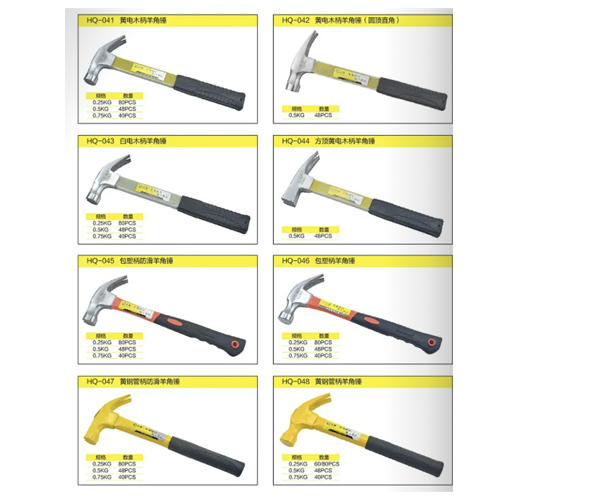
| Brand | Features | Notable Strength |
|---|---|---|
| Estwing | One-piece steel, ergonomic handles | Durability, comfort |
| Stanley | Fiberglass or wood handles | Affordability, craftsmanship |
| Vaughan | Shock-absorbing handles, variety | Toughness, reliability |
15. How Can You Choose the Best Claw Hammer for Your Needs?
Choosing the best claw hammer involves several key considerations, including the type of work you’ll be doing, the material of the hammer handle, and the overall weight and balance of the tool. But here’s the kicker: with so many options available, it can be difficult to know which hammer is right for you. What’s the real story? The best claw hammer for your needs will depend on your specific requirements, whether you’re a professional carpenter, a contractor, or a DIY enthusiast.
For heavy-duty work, such as framing or roofing, a hammer with a larger head and heavier weight may be best. These hammers provide more force with each strike, making them ideal for tasks that require substantial power. But wait, there’s more! If you’re working on smaller projects or prefer a lighter hammer for more control, a smaller, lighter claw hammer might be more appropriate.
Another important factor to consider is the material of the handle. Wooden handles are traditional and provide a classic feel, but they can break or splinter over time. Fiberglass and composite handles are more durable and provide better shock absorption, making them a good choice for prolonged use. The handle material can greatly affect the comfort and longevity of the hammer, so choose one that fits your preferences.
Finally, consider the hammer’s grip and balance. A well-balanced hammer will make your work easier and more efficient, while a poorly balanced hammer may lead to discomfort or even injury. Test out a few options to find one that feels comfortable and performs well for your tasks.
| Factor | Considerations |
|---|---|
| Weight | Heavy-duty vs. light work |
| Handle Material | Wood, fiberglass, composite |
| Grip and Balance | Comfort and ease of use |
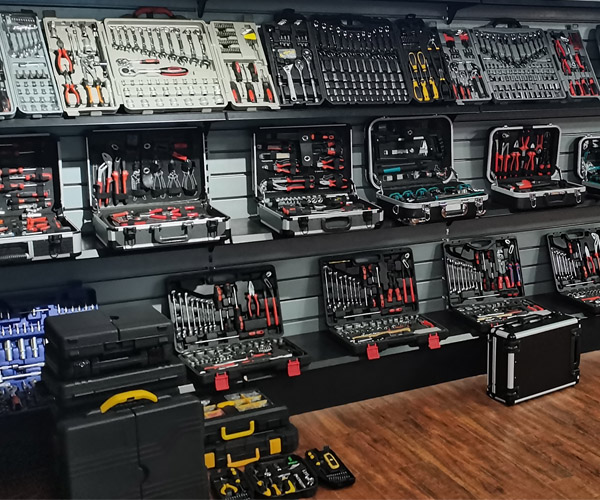
FAQ
Q1: What is a claw hammer?
A claw hammer is a hand tool used for driving nails and removing them, characterized by a head with a curved claw at one end.
Q2: How does a claw hammer work?
The hammer works by using the flat face to drive nails into material, while the claw at the other end allows for nail removal with leverage.
Q3: Who invented the claw hammer?
The claw hammer evolved over time, with contributions from various blacksmiths and toolmakers, including John S. Pemberton.
Q4: Why is the claw hammer important in construction?
It simplifies work by combining two essential functions—driving and pulling nails—making it a vital tool in construction and woodworking.
Q5: How has the claw hammer evolved over time?
Over time, the claw hammer has evolved with ergonomic handles, stronger materials, and more refined designs, but its core functionality has remained the same.
If you’re looking for high-quality, durable hand tools that meet your specific needs, look no further—Kolarwin Tools is here to help! As an OEM factory specializing in hand tools, we offer customization services tailored to your brand’s requirements. Whether you’re in need of claw hammers, screwdrivers, or a full range of hand tools, we can deliver the products you need with the reliability and quality you expect.
Ready to take your business to the next level? Contact us today to discuss your requirements, and let us provide you with the best tools for your brand. Partner with Kolarwin Tools, and let’s build a lasting relationship focused on quality and innovation.

